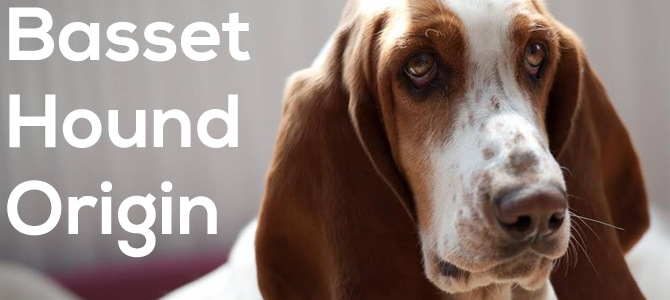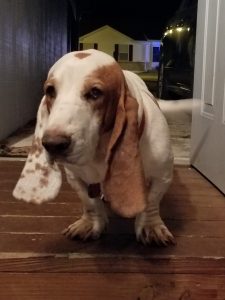
The Basset hound is one of the most loved breeds of dogs and it’s easy to see why. Their deep eyes, long ears and placid personality, they are a staple household companion.
However there is a storied history to our favourite Basset breed. We’re going to take a trip into the Basset hound origin story and see how we ended up here today!
Basset hounds are part of a family of breeds known as the scent hound. These types of hounds operate primarily through their sense of smell while hunting.
Scent hounds have been bred throughout the ages for the purposes of hunting and their keen sense of smell comes second only to the Bloodhound.
Where did basset hounds originate from?
The Basset hound origin story begins a long time ago way back in ancestry. Engravings and evidence of short-legged hounds were found in Egypt, which make up the first known recordings of the hound in some form.
Hunting and tracking with scent hound breeds goes back to the age of antiquity. The highly attuned sense of smell, high energy levels and low-set form meant that they were equipped with all the makings of a true hunter.
Bassets specifically can be traced back in history to France in the 1500s where they were originally bred as part of a specialised program. They were designed to be highly attuned tracking dogs that could be followed on foot as opposed to horseback such as other breeds.
Horseback hunting was confined mainly to nobility, so the development of a dog that could be followed on foot was a neccessity. This explains the short legs and high energy levels! In addition, the short height made them perfect for tracking in long grasslands and bushes.
The most commonly referenced basset hound ancestor is the St. Hubert’s hound, an early descendent of the bloodhound developed by St Hubert of Belgium.
The St Hubert hounds were frequently sent as gifts to the King of France and they weren’t always highly regarded due to their slow speeds in comparison to other dogs. These dogs were said to have been low-set with tan markings and upright ears.
However, Basset variety breeds came to a heightened popularity in France around the same time as Napoleon III (1852-1870). Napoleon III himself had basset hounds of his own which helped to bring some popularity to the breed. Shortly after at the first exhibition of dogs in Paris, basset hounds started to gain traction and fame.
There were several types of hound of similar form bred around at this time with slight variations in stature and other features. It was around this point where the short-haired basset was officially bred closer to how we know today. This marks where the basset hound origin started and began the basset revolution.
Basset hounds were bought to England around the 19th Century, first appearing in a dog show in 1880. Queen Alexandria brought bassets into the royal kennels shortly after. One of the first known owners of the basset in the USA was none other than George Washington.
Since then, there have been a few minor adjustments to the breed. Official breed standards were bought onto the scene at the end of the century. There was a later update put into place in 2010.
What are basset hounds bred for?
We know that basset hounds were originally bred to hunt smaller animals, specifically to drive them out into the open for the hunt. Their low-set bodies made them ideal for this, being able to keep to the undergrowth and not alert the game to their presence.
Basset hounds are closely related to other scent hounds such as the bloodhound, which were widely used in hunting larger animals such as wild boar and deer. Bassets, due to their stature, short legs and lower speed were more suited for tracking foxes and badgers.
Although records are slightly unclear as they date all the way back to the middle ages, variants of the early short legged hound were first recorded in Belgium. What would become today’s basset hound is related to the French hounds that were imported into England in the late 1800s.
What do basset hounds hunt?
Basset hounds, unlike the bloodhound and other larger scent hound breeds, are bred to track smaller animals. They are at an advantage for hunting foxes, badgers, rabbits and the like because they can stay relatively close to the ground and remain undetected.
Despite being of short stature, they are essentially a full sized hound. This makes the basset a great combination of strength and stealth… at least when tracking smaller animals in deep brush.
Bassets exhibit strong pack hound traits and they prefer to move in groups. They work very well together when hunting and sniffing out their prey. This makes them a perfect suit for being a family pet.
Are Basset Hounds good family dogs?
Basset hounds make excellent family pets. They can be very energetic and do need exercising every day. Docile in disposition, if trained properly and taught boundaries, you’ll find that your hound is very well behaved and excellent around children.
Despite their short legs and low stature, bassets love to run. although not the fastest of the hounds, they can still cover quite a lot of distance and love an open field to run around in.
Bassets are reputedly quite stubborn, but we found that training some basic commands isn’t too difficult at all. We taught our basset to sit and wait for her food to be prepared before tucking in and several other commands without a problem.

